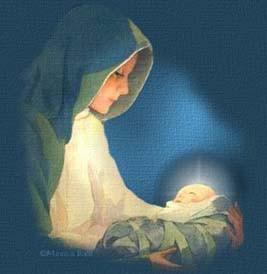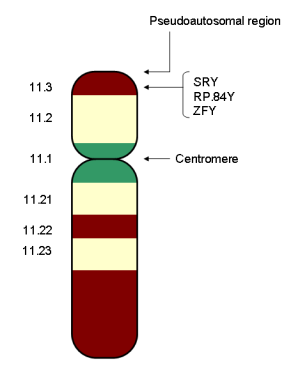Note: I first published this on Christmas Day two years ago. But it seems most readers just don’t know what to make of it. So I’m republishing this in the hope that more will read this.
~Eowyn
………………………………………………………..
“The angel Gabriel was sent from God to a town of Galilee called Nazareth, to a virgin bethrothed to a man named Joseph, of the house of David, and the virgin’s name was Mary. And coming to her, he said ‘Hail, full of grace! The Lord is with you.’ But she was greatly troubled at what was said and pondered what sort of greeting this might be. Then the angel said to her, ‘Do not be afraid, Mary, for you have found favor with God. Behold you will conceive in your womb and bear a son, and you shall name him Jesus. He will be great and will be called Son of the Most High….’ But Mary said to the angel, ‘How can this be, since I have no relations with a man?’ And the angel said to her in reply, ‘The Holy Spirit will come upon you, and the power of the Most High will overshadow you. Therefore the child to be born will be called holy, the Son of God.” Luke 1:26-35

A criterion that biblical scholars use to assess whether the New Testament’s accounts of Jesus are true is the Criterion of Embarrassment. The reasoning goes something like this:
Being human, writers tend to write accounts that put them and/or their cause in a positive light. Given that, accounts that are embarrassing are likely to be true because the Gospel’s author would have no reason to invent accounts that reflect negatively on Jesus, his mother, or his followers.
Mary’s pregnancy and virgin birth meets the Criterion of Embarrassment.
Fr. Dwight Longenecker explains that according to Hebrew (Mosaic) law of the time, a girl who became pregnant outside of marriage could be stoned to death. Upon being told by Mary that she was pregnant with child, Joseph had every reason to fear — not only for Mary, but also for his own fate because, in the eyes of the community, he would be the obvious culprit. Joseph was in a quandary: To marry his fiancée would be to admit that he had impregnated her before marriage and he would have to live the rest of his life with that bad reputation. Not to marry his fiancée, however, would mean abandoning Mary to, at best, a life of shame, and at worst, death by stoning.
But Joseph heard the angel’s word — “Do not be afraid to take Mary as your wife” — and responded with courage and fortitude.
All of which means that the author of the account in Luke 1 was telling the truth, that:
- Mary was a virgin;
- She conceived a child not by man but “by the power of the Holy Spirit”;
- Her child is the Son of God.
Translated into the language of modern biology, what this means is that Jesus’ DNA would have no Y chromosome.
Deoxyribonucleic acid (DNA) is a nucleic acid containing the genetic instructions used in the development and functioning of all (except RNA viruses) known living organisms. DNA segments carrying this genetic information are called genes.
A chromosome is an organized structure of DNA and protein found in cells. It is a single piece of coiled DNA containing many genes, regulatory elements, other nucleotide sequences, and proteins that package the DNA and control its functions.
In human beings, as in all mammals, sex/gender is determined by the XY chromosomes. The XY sex chromosomes are different in shape and size from each other. Females have two of the same kind of sex chromosome (XX), while males have two distinct sex chromosomes (XY). A male child gets his Y chromosome from his biological father. The combination of two Y chromosomes is always lethal in humans.

The human Y chromosome showing the SRY gene
Within the Y chromosome is a gene, SRY, that is the sex-determining region of the Y chromosome. Once SRY is activated, cells create testosterone and anti-müllerian hormone to turn the genderless sex organs into male. With females, their cells excrete estrogen, driving the body down the female pathway.
In his book, The Physics of Christianity (Doubleday, 2007), Tulane University physicist Dr. Frank J. Tipler reasons that if the Gospels’ account of the virgin birth is true, then Jesus’ DNA makeup would have no Y chromosome because he did not have a human father, but instead have two X chromosomes. However, since Jesus was clearly male, he must have the SRY gene. But the SRY gene, instead of being in the Y chromosome, was inserted into a location where it is not normally found – inside one of the two X chromosomes imparted from Mary, his mother.
And that’s exactly what a team of Italian researchers found.
In January 1995, led by Professor Marcello Canale of the Institute of Legal Medicine in Genoa, a group of Italian researchers, including several workers who had invented the standard DNA test for gender, conducted a DNA analysis of the blood on the Shroud of Turin and on the Oviedo Cloth (also called the Sudarium of Oviedo). A recent report by scientists confirms that the Shroud is not a fake. Mark Guscin provides strong evidence that the Sudarium of Oviedo, Spain, is the cloth described in John 20:7 as being wrapped around Jesus’ head.
Here is Dr. Tipler’s account (from pages 183-187 of his book):
Normally, the results of a DNA test of the blood on such a famous object would be published in English in a major scientific journal. … Not so the results of this DNA test. The results were published, in Italian, in the very obscure Italian journal devoted to the study of the Turin Shroud. Furthermore, only the raw data were published. That is, the Genoa team published black-and-white Xerox copies of the computer output of the DNA analyzer. This is never, never done. Always, the data are presented in a neat table or figure, and they are accompanied by a discussion of their significance. The Genoa team made no effort to interpret their data.
But I was able to interpret the data at once. They are the expected signature of the DNA of a male born in a Virgin Birth! …
The Turin Shroud data show 107 (106+1) but not trace of a 112 base pair gene. The Oviedo Cloth data show 105 (106-1) but no trace of a 112 base pair. The X chromosome is present, but there is no evidence of a Y chromosome. This is the expected signature of … virgin birth, the XX male generated by an SRY inserted into an X chromosome. It is not what would be expected of a standard male.
Other explanations are possible. The DNA analyzed could be entirely contamination from people who later touched the Shroud and the Cloth. But we have witnesses that men touched the two samples also, and it seems incredible that no trace of male contamination would be seen…. Another possibility is that the Turin Shroud and the Oviedo Cloth are fakes and that the fakes used real blood from males they knew were born of virgins. This possibility, in my opinion, has zero probability.
The DNA data thus support the virgin birth hypothesis. The DNA data supporting a virgin birth also support the hypothesis that both the Turin Shroud and the Oviedo Cloth are genuine.
So much for what Rudolf Bultmann, a leading theologian of the 1930s, once sneeringly said: “Myths [like the Virgin Birth] are difficult to believe in these days of electric lights.”
In the end, what is most intriguing about the Shroud and the Ovieto Cloth is that their characteristics and true nature are increasingly revealed as human beings grow more in knowledge and our science becomes increasingly advanced and sophisticated. Instead of science showing the Shroud and the Ovieto Cloth to be fakes, it is with science that their miraculous character is revealed.
“The people who walked in darkness have seen a great light; upon those who dwelt in the land of gloom a light has shone. You have brought them abundant joy and great rejoicing…. For a child is born to us, a son is given us; upon his shoulder dominion rests. They name him Wonder-Counselor, God-Hero, Father-Forever, Prince of Peace.” -Isaiah 9:1-6
~Eowyn

